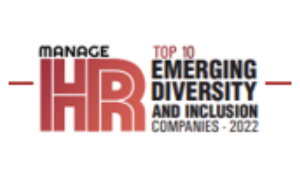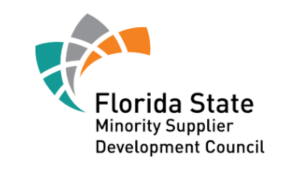According to YPulse, the leading authority on Gen Z and Millennials, Rihanna’s Savage x Fenty was identified as the most inclusive brand by Gen Z consumers across North America and Europe. That’s right, Rihanna’s voice and stage performances have made her a superstar, but building an inclusive brand is what made her a billionaire.

With a wide range of sizes, models of different body shapes and sizes in its campaigns, and a focus on empowerment and self-love, Savage x Fenty ranks as number one among Gen Z’s top inclusive brands. Plus, the brand’s strong social media presence—including partnerships with some of their favorite influencers— makes it easy for Gen Z to connect with and stay up-to-date on the latest trends. Fenty Beauty, Rihanna’s cosmetic brands ranks #2 for inclusivity by Gen Z-ers in North America.
What does it mean to be an “inclusive” brand?
When we refer to brands that “reflect diversity,” we’re referring to brands that prioritize inclusivity across all areas of their company. For young consumers, a brand that truly reflects diversity is one that creates products and services for a range of sizes, skin tones, gender expressions and more—also demonstrating a commitment to diversity and inclusion through their hiring practices.
To truly reflect diversity, a brand needs to make a concerted effort to hire and represent a wide range of individuals, make sure their product offerings are inclusive of these diverse generations—and then be transparent about these efforts. This requires companies and their marketing executives to assess their workplace culture to understand what their employees feel and believe about how inclusive it is.
The Case of Inclusive Marketing – The Statistics
Creating diverse and inclusive ads allows your brand to seamlessly connect with disabled audiences and the wider population. Inclusive marketing isn’t just for people with disabilities; we know it has widespread implications, and consumers across the board value inclusive and diverse marketing strategies more than anything else:
- 80% of consumers said they were more likely to engage with a brand that uses diverse and inclusive imagery in their campaigns.
- 64% of consumers take action after seeing an ad they believe to be diverse or inclusive.
- 62% of consumers said they are likely to purchase from a brand that prioritizes diversity and inclusion in its ads.
What is Inclusive Marketing?
Inclusive marketing is a strategic approach to advertising that recognizes and embraces diversity in all forms, including age, appearance, ethnicity, gender identity, language, socio-economic status, religion, and physical and mental ability. It aims to create a sense of belonging and welcoming for people who are often marginalized, underserved, or legally protected. Inclusive marketing can also encourage positive social change and foster connections.
The Top 10 Most Inclusive Brands in North America
Rankings are determined by the average reflects diversity score — one of 20 youth-centric metrics tracked with the YPulse youth intelligence platform. YPulse conducts thousands of weekly interviews with 13-39-year-olds across North America (n=2,500) and Western Europe (n=2,500). This dataset was generated from interviews with 13-21-year-olds conducted between 2/28/2022-2/26/2023.
- Savage x Fenty (61%)
- Fenty Beauty (60%)
- TikTok (58%)
- YouTube (54%)
- Jordan (52%)
- Nike (50%)
- Netflix (48%)
- National Basketball Association (47%)
- Instagram (46%)
- Amazon (44%)
How to implement inclusive marketing
You can use this step-by-step guide as a reference when implementing your inclusive marketing campaign:
1. Consider your target audience
Before you can implement a marketing plan, you often try to identify who you’re hoping to reach. Considering the demographic details you want your marketing campaign to include is important in helping you establish the target market for your campaign. Once you’ve established who you’re marketing a product, program, or service to, you can determine the techniques and tactics you’re going to use to market to them. This can help you most efficiently and effectively create an inclusive marketing plan that has a higher chance of success.
2. Gather opinions
To create the most accurate and appropriate inclusive marketing plan, it may help to gather opinions from people to determine whether they believe your plan appears inclusive. You may conduct focus groups to receive feedback on the marketing plan or compare it with other inclusive and diverse marketing plans you’ve seen before. Gaining insight into how inclusive a marketing plan is based on the public’s opinion is important because these groups often include people to whom you’re marketing.
3. Outline a plan
Once you confirm your marketing campaign has appropriately represented everything you want it to, you can create a detailed plan about how to launch it. In this plan, you can craft a timeline for the launch, including details like when to finalize photo shoots or designs, when to have status update meetings, and when certain items should be ready. You can distribute this detailed plan to everyone involved in the campaign so all parties are as informed and updated.
Final Thoughts
Years before the Barbie movie phenomenon, leaders at Mattel became concerned that consumer perceptions of the famous doll were uncoordinated with demographic trends. The company conducted in-depth research to understand how customers felt about Barbie and to determine whether more inclusive versions presented a strong market opportunity. The findings led to a new inclusion strategy that affected all areas of the brand—product design, distribution, and commercial activities—and coincided with a period of significant growth. Barbie revenues increased 63% from 2015 to 2022—before the boost from the film.
At its core, inclusive marketing is about creating content that reflects the diverse communities your organization serves. These efforts should work to decrease biases and elevate the stories and voices of people who have been historically underrepresented or marginalized. When done right, inclusive marketing can deepen connections with customers, build employee satisfaction, and lead positive change. Want to learn more about a DEI strategic plan that contains an inclusive marketing component? Contact Inclusive Leaders Group.
Sources:








